October 2021 EcoQuest: Gander at Grasses
Join the October EcoQuest: Gander at Grasses
For this EcoQuest, find and map fountain grass (Cenchrus setaceus) and native grass alternatives.
Join the EcoQuest
See the Grass Guide
Download the Fountain Grass Pamphlet
en español
Fountain grass has long been sold as an ornamental landscape grass and can be found across the country. While it is a very attractive grass species, it can spread rapidly and have problematic ecological effects, much like buffelgrass (Cenchrus ciliaris). Observations from this EcoQuest can help us understand more about the range of fountain grass and compare it to native species.

This month’s EcoQuest is in collaboration with the Arizona Native Plant Society (AZNPS).
AZNPS is focused on promoting native plant use and conservation. Meetings, field trips and workshops provide the opportunity to build your native plant knowledge and become involved in local conservation work. AZNPS also produces Plant Press Arizona, a biannual publication that includes native plant information, research articles, book reviews, and society happenings. We have a local chapter right here in Phoenix!
Learn more, join, and/or support the Arizona Native Plant Society (AZNPS).

Fountain grass in a neighborhood wash.
People have carried plants with them to new places for ages, but sometimes this creates unintentional results. Plants are not inherently “good” or “bad.” Some just end up in a place where they can thrive and are invasive in areas they aren’t native to. Invasive plants are those that have the tendency to alter the ecosystem they live in by dominating the competition for space and resources. Fountain grass (Cenchrus setaceus) is an example of this. Native to Africa, its seeds were first available in the U.S. around 1880, and it may have been used to help reduce erosion. Records show that it was being cultivated in Tucson in the 1940s and the earliest voucher in Maricopa County dates to 1962. Fountain grass has escaped cultivation in home landscapes-thanks in large part to its easily spreading seeds. It can now be found as dense stands in washes and natural areas, where it competes with native plants, alters habitat, changes water flow and creates fuel for wildfires. There are no reported benefits of fountain grass to wildlife or pollinators. It was officially listed as an Arizona Noxious Weed in 2020 and can no longer be imported or sold in the state.
Download the Fountain Grass Pamphlet. en español.

Fountain grass voucher, 1962 by Elinor Lehto.
Consider removing fountain grass if it is planted where you live and can do so. While this is not an easy task, it is worthwhile to keep it from spreading further. Remove individual plants by digging out all of the crown tissue at the base of the stems just below the surface. This should ideally be done before the grass goes to seed. Be sure to place in a bag when disposing of it to prevent further spread and wear gloves and protective gear when removing. Do not mow! It will likely grow back from the crown.
What to do if:
• You see fountain grass where you live, but don’t own the property: try to speak with the property manager/owner to make them aware that fountain grass is invasive and see if they would be willing to remove the fountain grass.
• You see fountain grass in a neighborhood public area: provide the HOA, community manager, etc., with the fountain grass pamphlet (digital link or printed copy) and let them know that fountain grass is an invasive and a noxious weed. Ask them to consider removing it.
• You see fountain grass in a city park: contact the park manager, parks and recreation department or natural resource division to let them know where you’ve seen it. (See Sources and More Information below for contact info!)
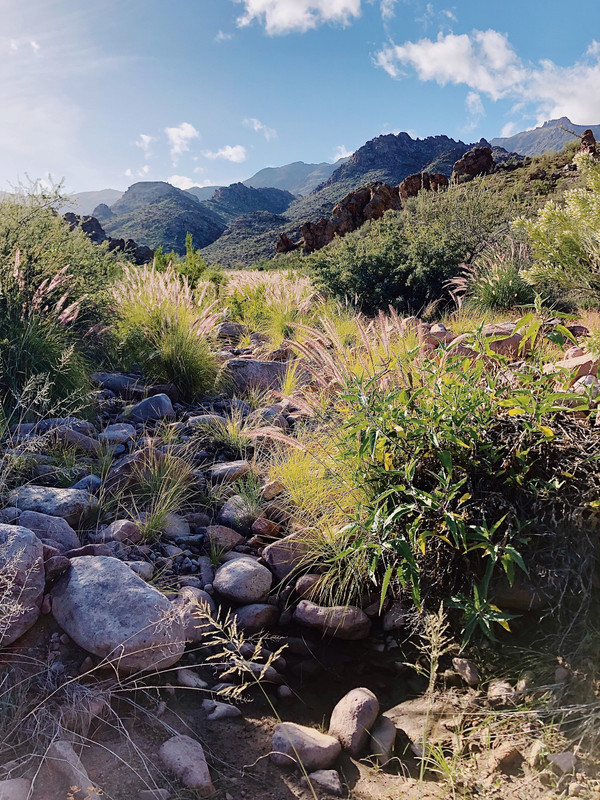
Fountain Grass in the Superstition Wilderness.
It’s a good time of year for planting. If you choose to remove fountain grass from your own property, you can replace it with native grass that will benefit wildlife and pollinators. Yes, there are native grasses in the Sonoran Desert! Some of the most common species include three-awns or wiregrasses (Aristidia spp.), grama (Bouteloua spp.), muhly (Muhlenbergia spp.), and galleta (Hilaria spp.). These are the easiest to find plants and seeds for at local nurseries and the Desert Botanical Garden plant sale. A few non-grass alternatives include rush milkweed (Asclepias subulata), chuparosa (Justicia californica), desert spoon (Dasylirion wheeleri) and banana yucca (Yucca baccata). Replanting with purple fountain grass (Cenchrus setaceus 'Rubrum’) may not be a suitable option. This grass is reportedly sterile and does not generally form seeds, but this doesn’t guarantee it won’t. And once again, fountain grass does not benefit wildlife or pollinators like our native grasses do.
Observations from this EcoQuest can contribute population and occurrence data for fountain grass, especially in urban landscapes. This can be compared to the data for the native grasses we’re searching for. We can also learn more about the areas that fountain grass may be occupying and where it could be spreading.
WHAT TO OBSERVE:
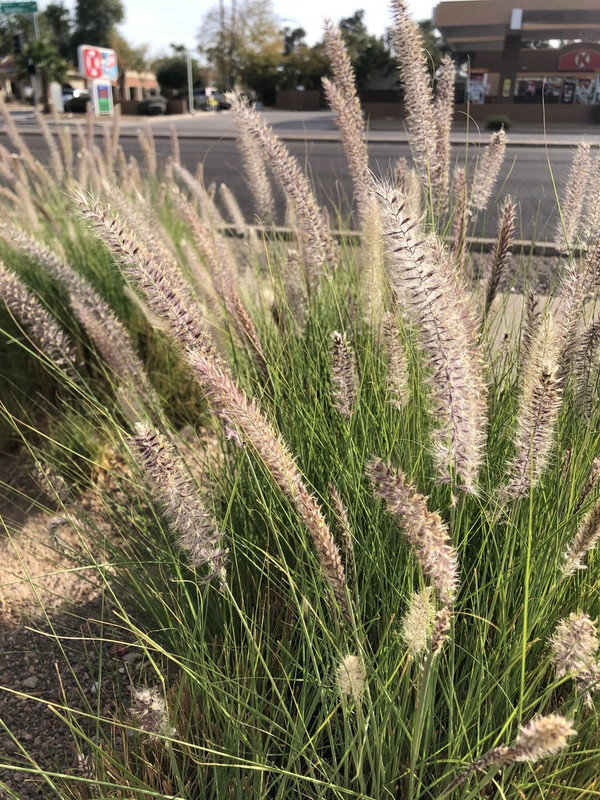
FOUNTAIN GRASS
Scientific Name: Cenchrus setaceus, (Pennisetum setaceum)
How to identify (from the AZNPS): Fountain Grass has a distinctive upright and graceful form with long feathery flower spikes at the end of the stems. Leaves are narrow and flat to V-shaped. Plants grow to 6 feet. The blooming spikes are 6 to 12 inches long and have purplish to bright green bristles with no visible seeds. The stems all grow from crown tissue just below the ground surface. Each year the base diameter increases, and the stems become more numerous.
Buffelgrass (Cenchrus ciliaris) resembles fountain grass, but it is smaller (3-5 feet tall) with smaller flower spikes. Its leaf blades also have a more tangled appearance, making it difficult to distinguish a single plant from another.
NATIVE GRASSES

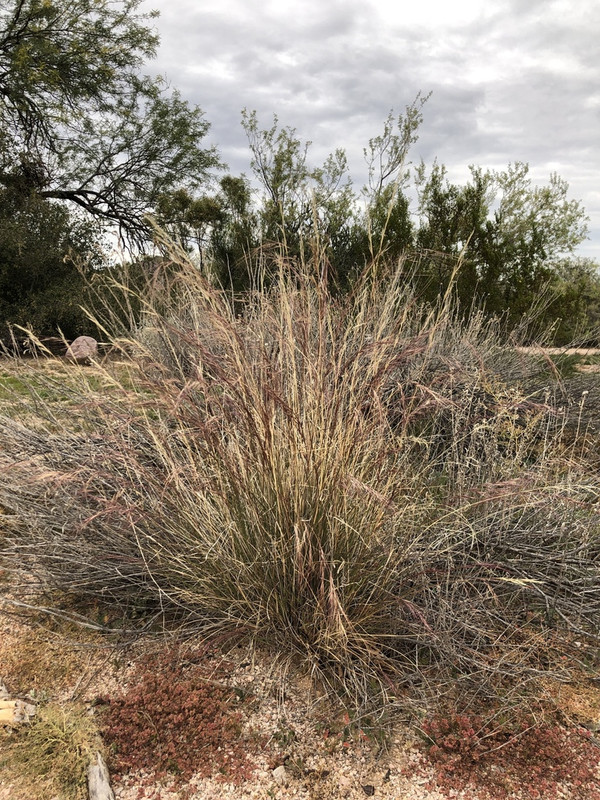
Common Name: Three-awn, wiregrass
Scientific Name: Aristida spp.
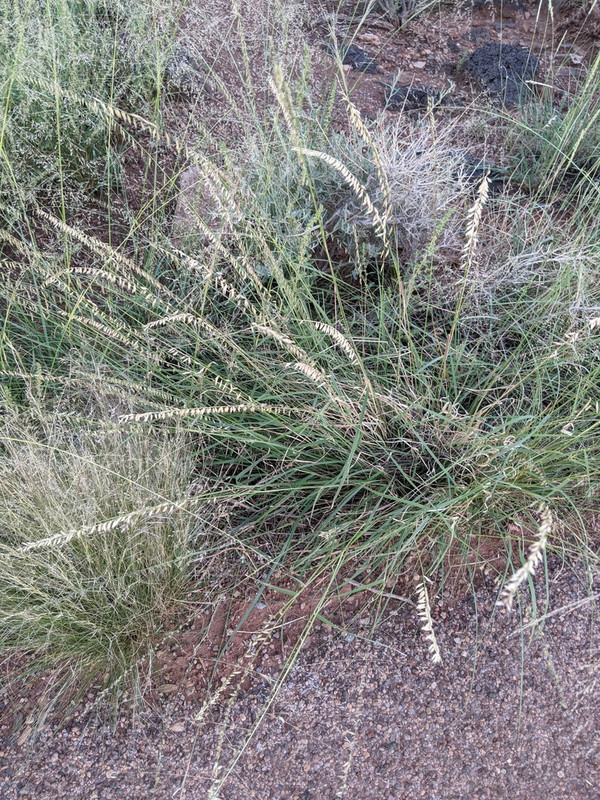

Photos by @larivera
Common Name: Grama
Scientific Name: Bouteloua spp.
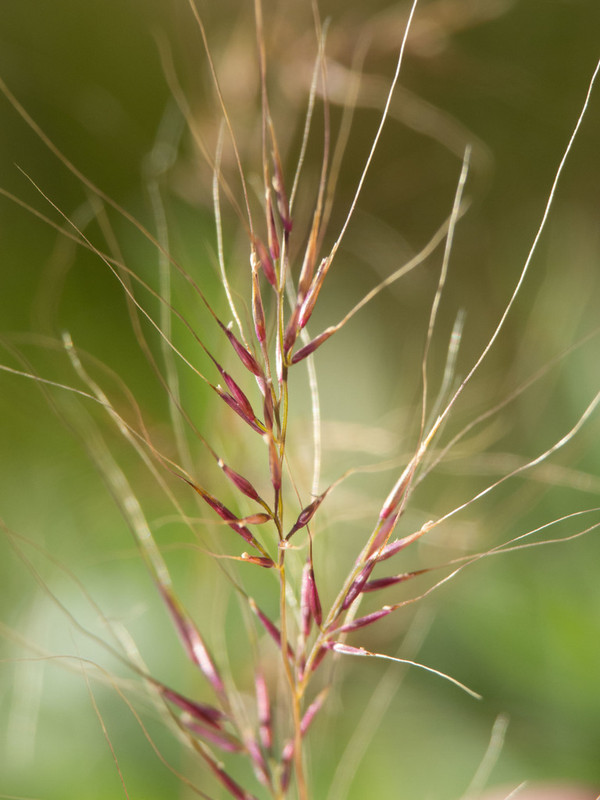

Photos by @stevejones
Common Name: Muhly
Scientific Name: Muhlenbergia spp.
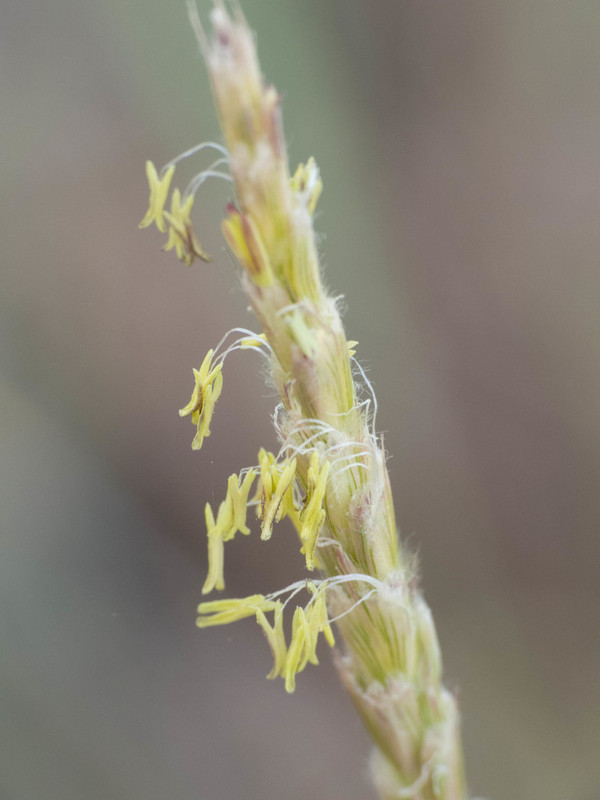

Photos by @stevejones
Common Name: Galleta
Scientific Name: Hilaria spp.
SOURCES AND MORE INFORMATION:
Park Contacts:
Phoenix City Parks: https://www.phoenix.gov/parks/contact-parks
Tempe: https://www.tempe.gov/government/community-services/recreation-services
Mesa: https://www.mesaparks.com/info-contact/contact-us
Scottsdale: https://www.scottsdaleaz.gov/parks
Glendale: https://www.glendaleaz.com/play/parks_and_recreation
Chandler: https://www.chandleraz.gov/explore/chandler-parks
Gilbert: https://www.gilbertaz.gov/departments/parks-and-recreation
Peoria: https://www.peoriaaz.gov/residents/parks-and-recreation
Buckeye: https://www.buckeyeaz.gov/community/residents/
Arizona Native Plant Society
National Park Service
Arizona-Sonora Desert Museum
Arizona Dept. of Agriculture

EcoQuests are month-long challenges that are part of the larger Metro Phoenix EcoFlora project. Learn more by visiting our website.>
Look for project happenings, EcoQuest announcements and more in the newsletter, project journal and on social media.
Sign up for the newsletter, The Metro Phoenix Field Guide.
Let's be social on Instagram, Facebook, and Twitter.

Please do not observe indoor houseplants or pets.
For your own safety and the protection of plants and wildlife, do not trespass when making observations. Please follow all posted rules and guidelines in parks/preserves and do not enter private property.
Do not remove or move natural materials (plants, animals, rocks).
Respect wildlife (do not touch, feed, or disturb animals and keep a safe distance).
Observe COVID-19 Guidelines/Recommendations.
This is a great opportunity to observe and appreciate nature in our neighborhoods as we all navigate the complications of COVID-19. It is imperative that you follow COVID-19 guidelines/recommendations (wear a mask, practice physical distancing and wash your hands).
Do what’s best for you and your community.
For more COVID-19 information and guidelines, visit:
https://www.inaturalist.org/projects/city-nature-challenge-2020/journal/31768-cnc-covid-19
https://www.inaturalist.org/blog/31664-exploring-nature-when-you-re-stuck-at-home
Arizona Office of Tourism: Responsible Recreation in AZ
https://tourism.az.gov/responsible-recreation-across-arizona






